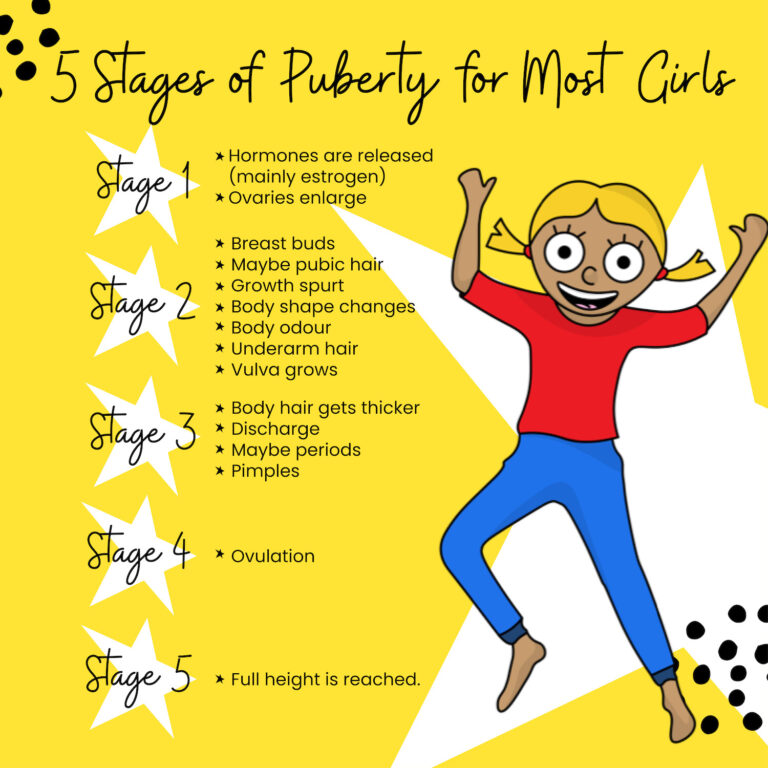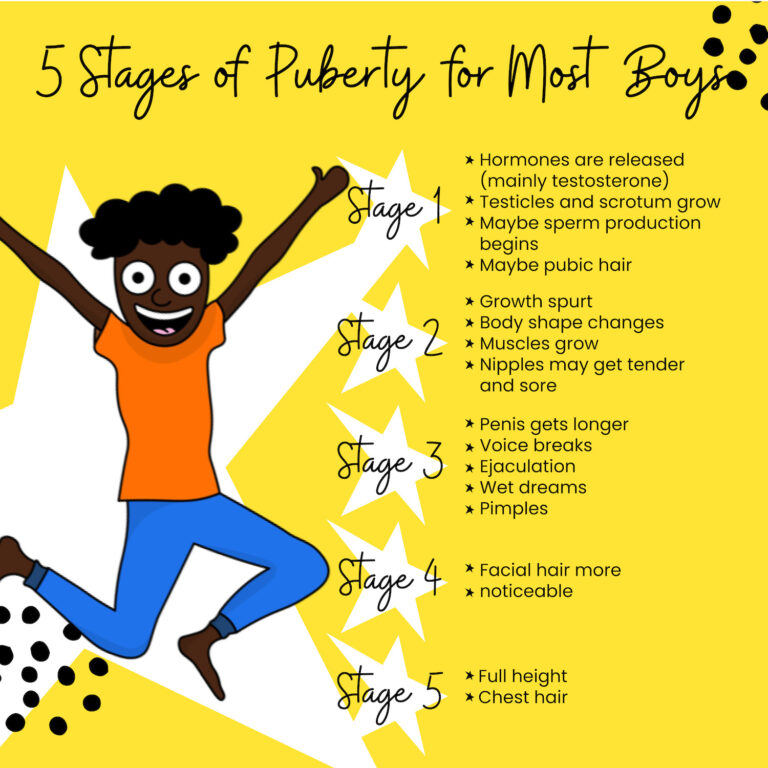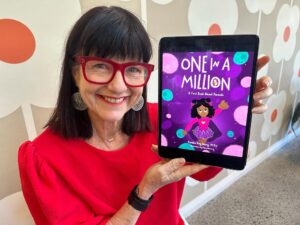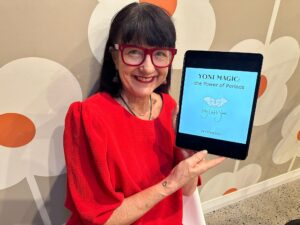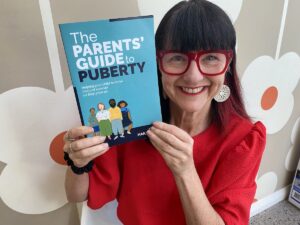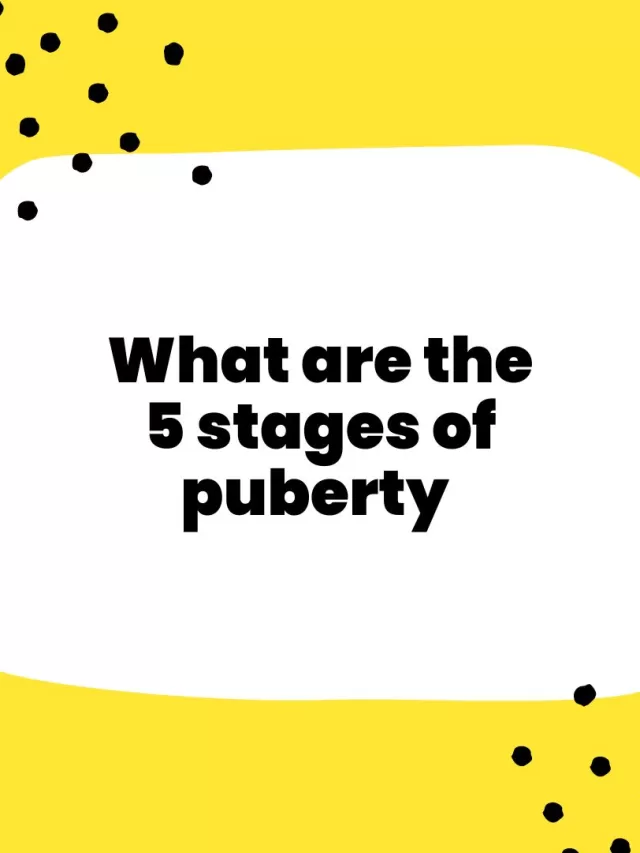The Tanner Stages of Puberty
Did you know that Puberty happens in 5 stages and that this can help you as a parent be prepared for what your child is going through and know that the changes that are happening to them are normal?
The Tanner Scale, which breaks down all stages of puberty was developed by James Tanner in 1969 based on a 20-year study.
A little bit further down we are breaking down the stages of puberty by age and gender.
Do note that these physical changes are approximate and do not include the important social and emotional changes.
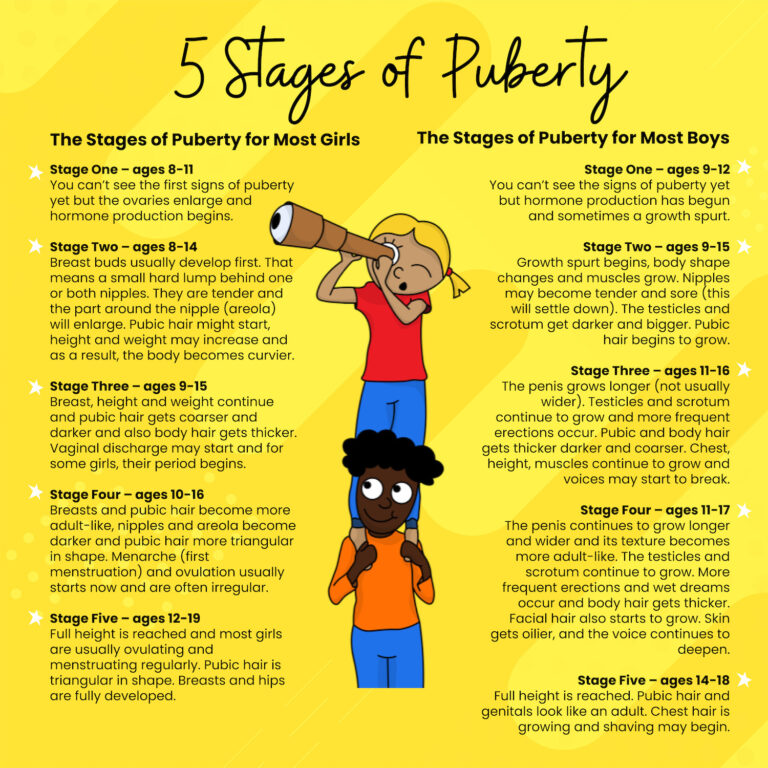
The Stages of Puberty For Girls
Stage One – ages 8-11
You can’t see the first signs of puberty yet but the ovaries enlarge and hormone production begins.
Stage Two – ages 8-14
Breast buds usually develop first. That means a small hard lump behind one or both nipples. They are tender and the part around the nipple (areola) will enlarge. Pubic hair might start, height and weight may increase and as a result, the body becomes curvier.
Stage Three – ages 9-15
Breast, height and weight continue and pubic hair gets coarser and darker and also body hair gets thicker. Vaginal discharge may start and for some girls, their period begins.
Stage Four – ages 10-16
Breasts and pubic hair become more adult-like, nipples and areola become darker and pubic hair more triangular in shape. Menarche (first menstruation) and ovulation usually starts now and are often irregular.
Stage Five – ages 12-19
Full height is reached and most girls are usually ovulating and menstruating regularly. Pubic hair is triangular in shape. Breasts and hips are fully developed.
The Stages of Puberty For Boys
Stage One – ages 9-12
You can’t see the signs of puberty yet but hormone production has begun and sometimes a growth spurt.
Stage Two – ages 9-15
Growth spurt begins, body shape changes and muscles grow. Nipples may become tender and sore (this will settle down). The testicles and scrotum get darker and bigger. Pubic hair begins to grow.
Stage Three – ages 11-16
The penis grows longer (not usually wider). Testicles and scrotum continue to grow and more frequent erections occur. Pubic and body hair gets thicker darker and coarser. Chest, height, muscles continue to grow and voices may start to break.
Stage Four – ages 11-17
The penis continues to grow longer and wider and its texture becomes more adult-like. The testicles and scrotum continue to grow. More frequent erections and wet dreams occur and body hair gets thicker. Facial hair also starts to grow. Skin gets oilier, and the voice continues to deepen.
Stage Five – ages 14-18
Full height is reached. Pubic hair and genitals look like an adult. Chest hair is growing and shaving may begin.
Every child is different and that means that you don’t need to worry if these different stages of puberty are not exactly what is happening in the same order or at the exact age of your child. Knowing this, can help you to be more understanding and open up conversations.
What stage is your child at?
What’s the Big Deal About Puberty is my interactive online course about puberty.
This puberty course is ideal for both parents/carers to do together with their pre-teens aged 9-12 years. This can also be completed by your child on their own.
Click on the button below to buy the course for only AUD 59.
More Resources About Puberty
Going through puberty is not easy, neither is talking about it. Below are my favourite books about puberty. As a mother and a teacher, I read all of these books and on each book page, you’ll find a review of the book.
I hope this helps you and your child(ren) navigate puberty.


